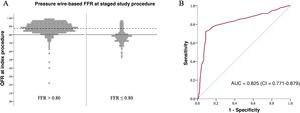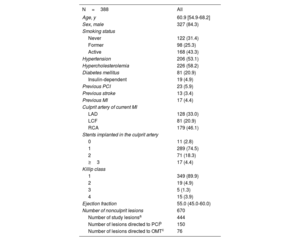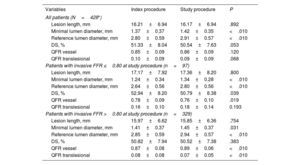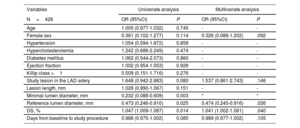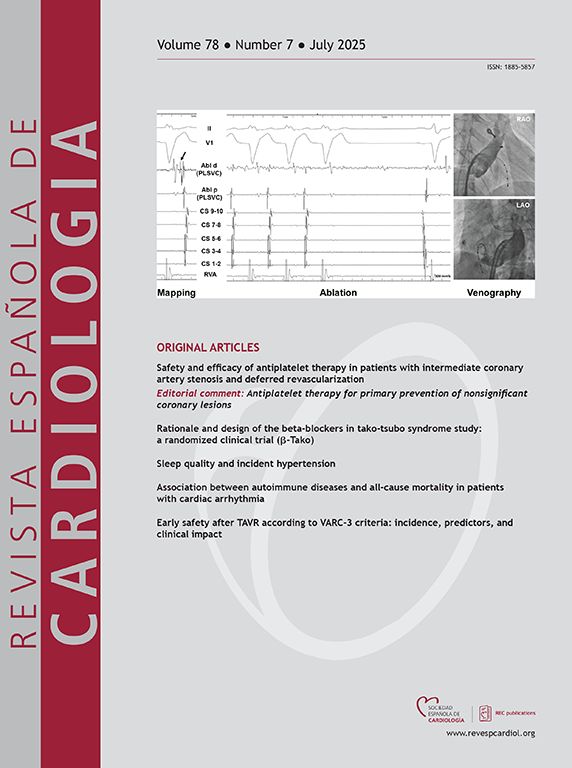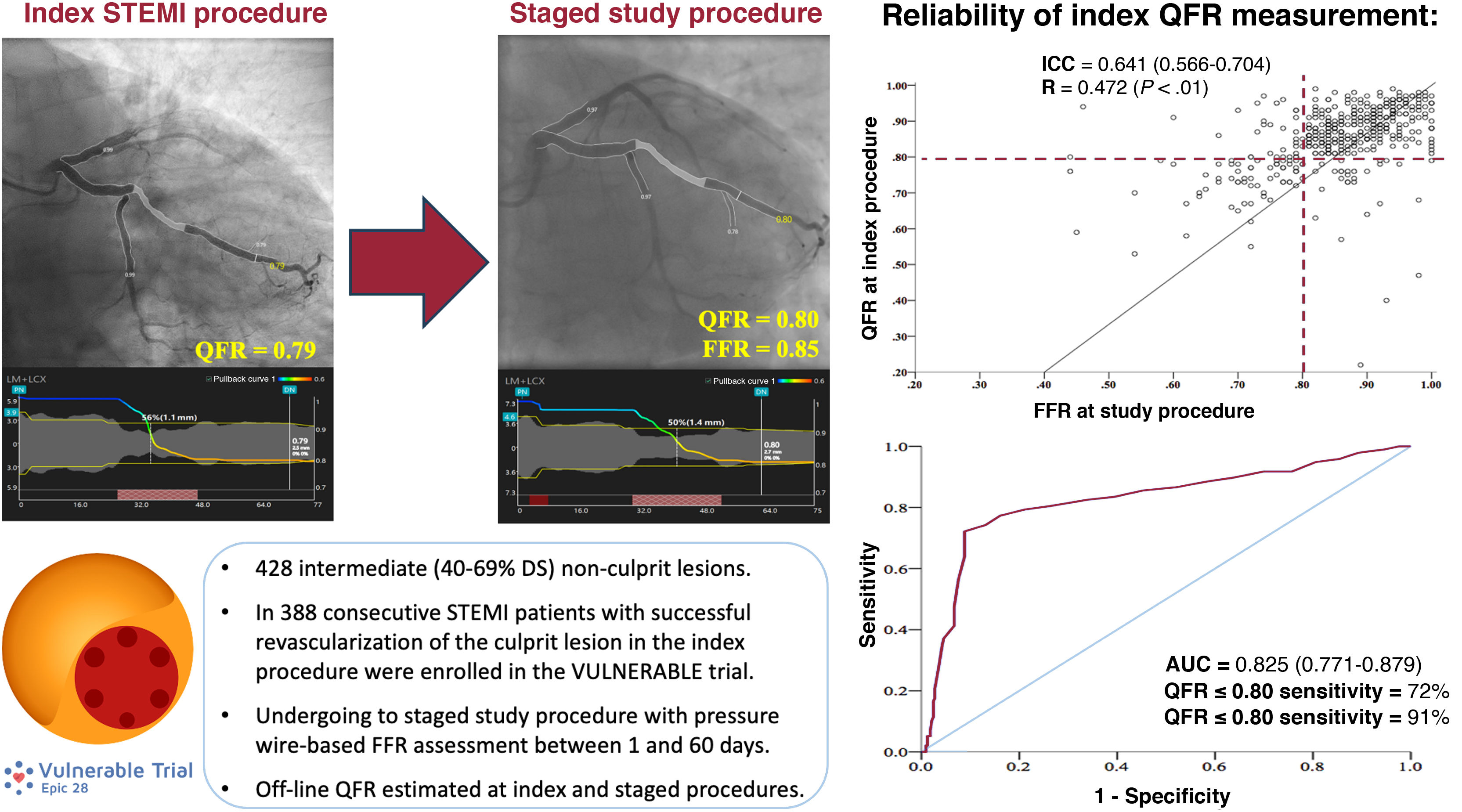
The reliability of quantitative flow ratio (QFR) has been questioned. Our aim was to evaluate the diagnostic accuracy of QFR in intermediate nonculprit lesions during the index ST-segment elevation myocardial infarction (STEMI) procedure compared with positive pressure wire-based fractional flow reserve (FFR ≤0.80) in a staged procedure.
MethodsThis was a substudy of the multicenter, controlled, and randomized VULNERABLE trial, including 428 intermediate nonculprit lesions from 388 consecutive STEMI patients undergoing FFR assessment in a staged procedure between 1 and 60 days. Off-line QFR analyses were performed during both the index and staged procedures. The primary objective was to assess the diagnostic accuracy of index QFR compared with staged positive FFR.
ResultsAngiographic vessel diameter (2.80±0.59 vs 2.91±0.57mm; P<.01), stenosis severity (51.33±8.04% vs 50.54±7.63%; P=.053), and QFR values (0.85±0.09 vs 0.86±0.09; P=.120) showed minimal changes between the index and staged procedures. Moderate concordance was observed between index QFR and staged FFR (kappa index=0.629; intraclass correlation coefficient=0.641). The diagnostic accuracy of index QFR for predicting positive FFR was good (area under the curve=0.825). An index QFR cutoff ≤0.80 showed moderate sensitivity (72%) and excellent specificity (91%). An index QFR ≤0.87 achieved a sensitivity of 86% for detecting lesions with positive FFR, with 55% of lesions presenting QFR ≤0.87 at the index procedure.
ConclusionsIndex QFR demonstrated good diagnostic accuracy for identifying lesions with positive FFR in a staged procedure. However, an index QFR cutoff value of ≤0.80 showed moderate sensitivity and may underdiagnose approximately 3 out of 10 lesions with positive FFR. An index QFR ≤0.87 provided higher sensitivity and may help avoid invasive (staged) procedures in many patients.
Keywords
Identify yourself
Not yet a subscriber to the journal?
Purchase access to the article
By purchasing the article, the PDF of the same can be downloaded
Price: 19,34 €
Phone for incidents
Monday to Friday from 9am to 6pm (GMT+1) except for the months of July and August, which will be from 9am to 3pm



